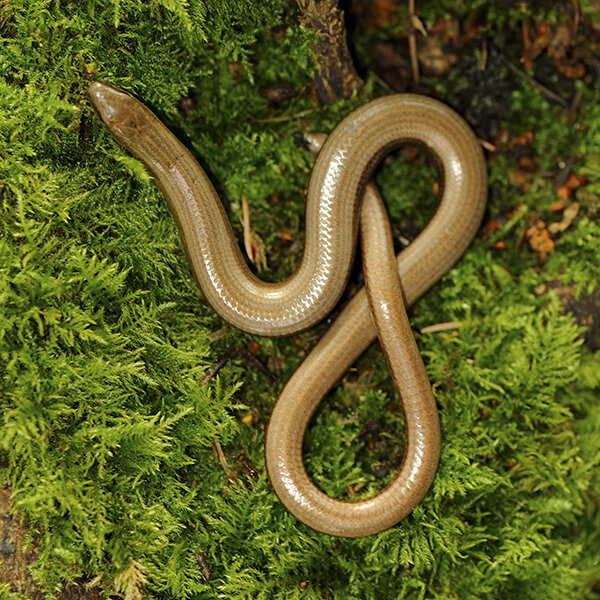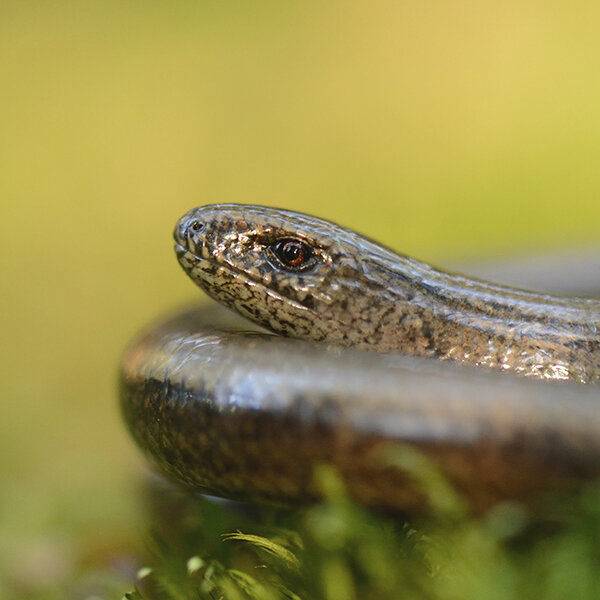Slow-worm
Anguis fragilis
Slow-worms look very similar to small snakes but are in fact legless lizards. They have eyelids (so can blink), ear openings, a flat forked tongue, and can drop their tail to escape from a predator, although it never fully grows back. They can grow up to 50cm in length.
Slow-worms have a shiny appearance. Males are greyish brown (although this is variable) and sometimes have blue spots; whereas females are coppery brown with dark sides. Females sometimes have a dark stripe long the middle of the back. Juveniles are small, measuring only around 4cm long, are very thin and have gold, silver or copper dorsal sides, sometimes with a dark stripe running along the length of the body along the back.
Slow-worms don’t tend to bask in the open, they prefer to hide under logs, in compost heaps, or sheets of corrugated iron in the sun. They feed on slugs, snails, spiders, insects and earthworms, mostly at dusk.
They emerge from hibernation in spring, and breeding takes places during April and May. Slow-worms are ovoviviparous which means the eggs are laid within the female’s body. The females then incubate the eggs internally, and eventually ‘give birth’ to around eight live young in the late summer. They survive winter by hibernating underground, or beneath piles of leaves, or within tree roots.
They are eaten by many predators such as snakes, hedgehogs, foxes, birds, and the domestic cat.
What they eat
Slow-worms eat slugs, snails and other small invertebrates.
Where and when to see them
They are common in Wales and south-west England, they are notably absent from Ireland.
They are often found in humid conditions and favour meadows, woodland edges, farmland, gardens and allotments.
They are active from March to November.
Check under logs or sheets of corrugated iron, but remember to replace anything that you move.
View a slow-worm 10km distribution map of Wales.
Legal status
The species is listed on Schedule 5 of the Wildlife & Countryside Act, it is therefore an offence to kill, injure or sell or trade them.
Similar Species
Did you know?
The discarded tail continues to move and wriggle about in order to distract the attacker, whilst the slow-worm escapes!
Slowworms are completely harmless and are helpful to gardeners by eating slugs, snails and other pest invertebrates. They can live up to 20 years!


